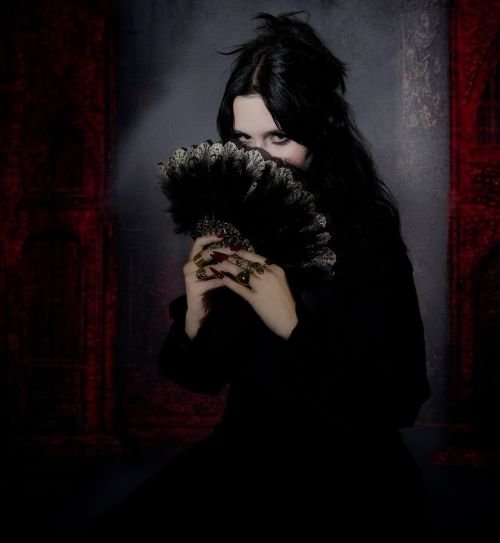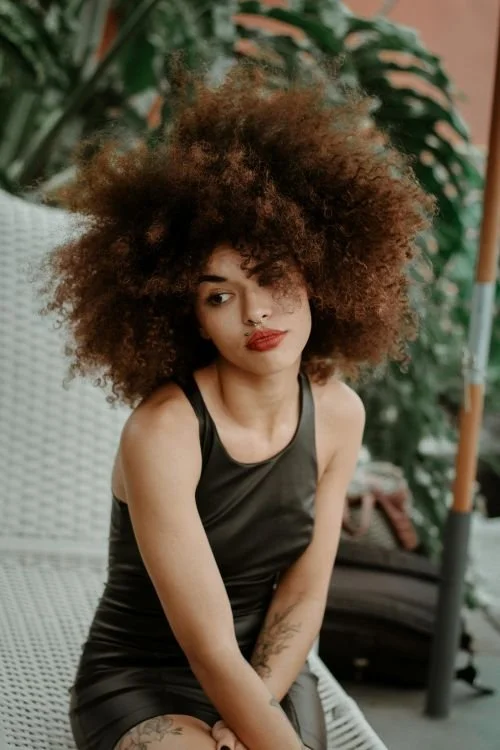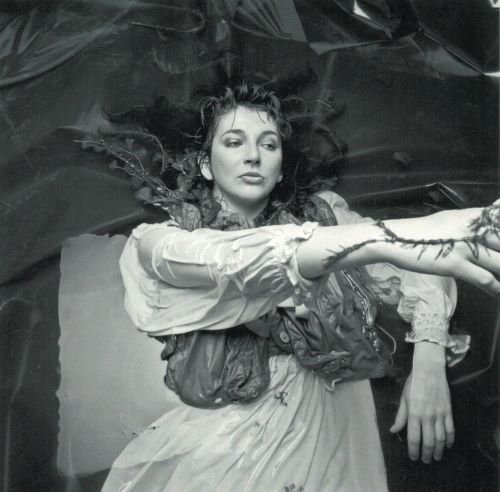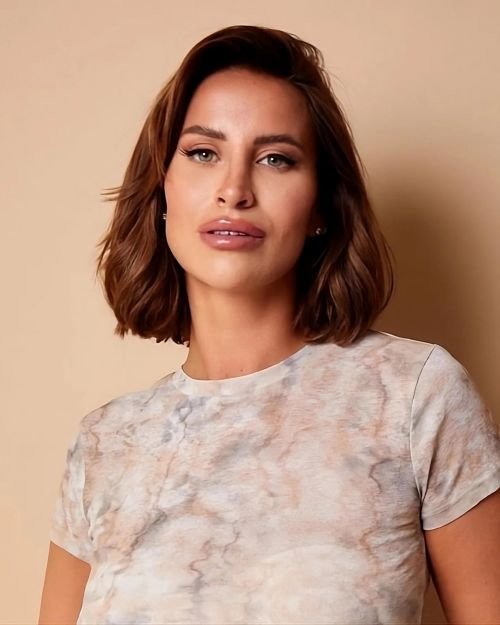FEATURE:
Spotlight
Amira Elfeky
_________
IN this Spotlight feature…
I am focusing on the brilliant Amira Elfeky. She is someone who you will want to follow. If you can see her on tour and she is playing near you, go and see her. This amazing singer/songwriter is based out of Los Angeles, California. Elfeky is a Connecticut native. Her Surrender E.P. came out at the end of March. It is a fantastic release. I want to get to a few interviews with Amira Elfeky. I am starting out with an interview from Revolver Mag:
“In February 2023, Amira Elfeky found the sound she’d been searching for all her life.
It had long been welling up inside of her, an unshakable feeling that the Los Angeles-based singer couldn’t articulate, nor even dared to. She often hesitated whenever her mouth came close to a microphone, lest she sing a note that strayed from the melody she felt but could not yet hear. For the first two decades of her life, she’d compiled a melting pot of sounds that came close to her inner melody: Deftones, Linkin Park, Evanescence. But it wasn’t until that winter night — when she haphazardly typed “Linkin Park Deftones type beat” into YouTube and clicked the first result — that she heard her soul-song sounded back to her. “I heard one second of it,” the 25-year-old says today, “and I was like, ‘Oh my God, oh my God!’”
Elfeky immediately called her producer, Tylor Bondar, and told him to meet her at the nearest recording studio. She jumped in the car, humming the melody she’d finally managed to externalize on the drive over. Bondar smoked a blunt and pressed record — and Elfeky instantly hit a register she’d never reached before. Bondar’s jaw was on the floor. The track flowed out of the singer like “a possession, like the song had always existed,” she recalls. “We just looked at each other and were like, ‘What the fuck?!’”
Then, lightning struck. Literally. As soon as they finished recording, a bolt took out all the power. When they turned the machines back on, they were relieved to find that the song had been saved just before the outage. They played it back and Elfeky immediately began to cry. “It was everything to me,” she says. “My soul finally felt like it was right; I made the song.” That song was called “Tonight” — a ghostly, sensuous track that is responsible for changing the course of Elfeky’s life.
After sitting on the demo for a few months, she eventually posted it, off-the-cuff, to TikTok in early July 2023. She turned her phone off, went to the movies with her boyfriend, and returned three hours later to 10,000 likes on her TikTok. Another three hours later it reached 80,000. She kept reposting the track, and soon gained one, two, three, four million likes. “Everything changed within a week,” she says. “Everything I’d ever wanted fell into place… and all just because I followed my intuition.”
Thanks to “Tonight,” Elfeky has become one of the fastest-rising stars of the nu-metal revival. She is one of the leaders of a new swathe of Gen Z kids who have turned to the Y2K genre and aesthetic to transmute their post-pandemic anguish. Elfeky’s take on it is gossamer, sensual, highly emotive; Deftones-esque. Earlier this year, she released her debut EP, Skin to Skin, on Anemoia — a subsidiary of Atlantic Records — and increased her rapidly growing fanbase on her first ever mini tour earlier this spring. With another EP, festival sets and a support slot on the Used’s upcoming tour in the works, Elfeky could well be on the way to becoming a generational voice.
Elfeky grew up in small-town Connecticut, with cows for neighbors and a strong, close-knit hardcore and emo scene just beyond the fields she called home. Her earliest daydreams of superstardom were stirred by one of the weirdest Y2K promotional gimmicks: a Britney Spears VHS tape sold exclusively at McDonald’s that included the “Oops!…I Did It Again” music video. She’d play it on repeat, throwing tantrums whenever her mom made her turn it off. As a toddler, Elfeky recalls watching live videos of Spears and fixating on the singer’s head-worn microphone. At six, she began begging her mom for a mic of her own. When she finally got one, she sang into it all day, pretending to be the popstar. Then, when she grew a little older, her focus shifted.
Her brothers, who were nearly a decade her senior, introduced her to the nu-metal of the 2000s that had soundtracked their adolescence. They began playing Guitar Hero together, and Elfeky replaced her plastic microphone with a plastic guitar. As a child, the music video for System of a Down’s “Chop Suey!” terrified her whenever it came on MTV. But when she played it alongside her brothers on the game, she finally got it. It invigorated her. (Earlier this year, she paid tribute to SOAD with a sultry cover of the Hypnotize classic “Lonely Day” for Spotify’s Singles series.)
She soon found herself gravitating towards Connecticut’s hardcore scene. Before Elfeky could even attend shows, she became enamored by the surrounding aesthetic. The first friend she made in high school was a dude who wore a Disturbed shirt; their clique soon expanded to include three more kids who had a penchant for Hot Topic merch. As teenagers, the five of them went to hardcore shows each weekend and Warped Tour every summer — and roasted s’mores in their backyards nearly every night while blasting Slipknot.
Elfeky felt desperate to form a band of her own, but she was still years away from capturing the elusive sounds in her head. She watched from the sidelines as others sang into their microphones, desperately wishing to project her own voice from the stage. “I always had this weird intention in my brain where it’s like, if I’m going to do it, I need to do it perfectly,” she says. So for a while, Elfeky didn’t sing at all.
During her late teens, Elfeky turned inwards. She sang — but only in isolation, and with a whisper. She began practicing in the bathroom, bringing in a guitar with her. She downloaded an app called BandLab and began recording simple vocals over a two-chord melody”.
Back in October, Amira Elfeky spoke with Sound of Saving. They spoke with someone who is providing something fresh and original to the Heavy Rock scene. An artist I am quite new to, I know that Elfeky’s fanbase is growing by the month. Someone who has this ardent and loyal following. No wonder when you hear her music. It instantly stands out and stays with you:
“SOS: Do you come from a musical background? How did you first get into music?
Amira: My mom and everyone else around me were into music, but no one really played an instrument or anything. It was kind of like, I'm gonna do this. No one really took it as seriously as I did. We grew up with lots of music, so my mom would always be buying a CD, vinyl or be playing something at all times.
I was always surrounded by music, like an abnormal amount, I would say. As soon as I could wear headphones, I would just listen to music all the time. And then in fourth grade, I picked up violin and I wasn't good at it, but I just did it in elementary school and later on, I started playing guitar and I did choruses and stuff. I had a hyper -fixation on microphones and my mom is right there, laughing because that’s what I wanted for Christmas. I begged for a microphone, because I used to have this little playset when I was three and it had one of those Britney Spears microphones. I was Britney Spears when I was three years old for Halloween and I was all about that diva life (laughs). My uncle's into rock and stuff. I was just always surrounded by rock and then I found my way into the genres that I listen to now through my older brother, who is nine years older than me. He was in that whole new metal era.
SOS: What artists and albums do you think inspired you?
Amira: In the beginning, I think what really sparked me wanting to make rock music was Nirvana. In utero was the album for me that I was just like…oh shit. I had everything related to Kurt Cobain, I read every book or magazine, I had every poster I could possibly have and then I got into Foo Fighters and I went this whole 90s rabbit hole and listened to Alice in Chains and Stone Temple Pilots.
That was when I realized that I wanted to be in a rock band. And then, I used to be in a rock band but I was just too controlling over my vision to share it with other people so I was like I gotta be a solo artist . I remember listening to “All Apologies’’ and it blew my mind, because it has the cello in it and they're like mixing all of these things together… from there I went to Evanescence and just moved it down, just like spirals.
SOS: How is your creative process on writing songs?
Amira: It depends, a lot of my lyrics come from my notes. I'll write a phrase down that I really enjoy and when it's time to start writing, I'll go through all my note sections. If I like the idea, I’ll build a whole story off that. So I never sit down with the thought. I know a lot of artists sit down like oh, let's write a song like this, but It just gets very emotionless for me so I just allow it to form itself and sometimes, I don't even know what I'm writing.
SOS: Your EP Skin to Skin is out. How do the songs feel to you now they’re held together on one record?
Amira: I love it! I'm excited to start writing my album. I like the cohesiveness of everything. Putting out singles is fun but putting out an entire body of work that goes all together fluidly is insane and it feels good to have everything done and then shove it out, as opposed to having your singles here and there. Creating a story and having the rollout for it is the most fun part for me.
SOS: What headspace do you enter when you are performing?
Amira: It's like a curtain. I was just explaining this to someone from my label today. We were talking about a live performance. If you meet me in person, I'm bubbly or a little shyer, but on stage, I get this confidence, because you have people screaming at you in the crowd. It's a unique experience. I think I just subconsciously snap into a place and it’s the same with the music. It's like everything that has to do with my music side of me, it just snaps into a certain place and it’s natural.
SOS: I really like that.. Let’s talk about your latest song Remains Of Us. There are a few lines that really stuck with me when I first listened to it:
“You said you hate who you are, but I hate what I'm not’’ and also “You are what you surrender to.’’
How was the process of writing this song?
Amira: So those were all lines that I had in my notes section that I kind of thought of randomly.
You said you hate who you are and hate who I'm not. For me, something that I deal with a lot is being a highly emotional person. Growing up, I was always highly emotional.
I kind of always struggled with daydreaming and wanting to be more than what I am. So I was in a relationship before and the other person was just really depressed and hated everything about themselves. I didn't hate myself, but I hated that I felt like I was wasting potential. It's this weird dichotomy of like, you're looking at someone who hates where they are right now and you don't hate where you're at right now, but you want more. And then it's just this discourse between the two of you. So yeah, so it's like it's just that's the only part on the song where I really like wail besides like the screaming part. And that needs a lot of energy because it's a loaded state.
SOS: What do you like about yourself these days?
Amira: Myself?
SOS: Yep. Just anything.
Amira: I feel like I'm starting to overcome a lot of anxiety, which I'm very proud of. I recently started going to therapy again. That's something that's really been a step for me. Also, my confidence as a woman, getting older and just letting go. As a woman, there is so much pressure and expectations. I spent a lot of time being obsessed with how we [women] look and what we do and how we sing and how we sound. I just feel that I was able to let go of so much of that, just by being on stage every night and being able to be a voice for a lot of people. That's the most beautiful thing, so nothing else matters to me. I'm so obsessed with wanting to just be my authentic self.
SOS: I love that you’re able to let go of so much of that weight. About perfectionism, that's such a good way to put it, especially because it’s so forgiving to be on stage. Is there anything that you'd like to do to take care of yourself and share with us?
Amira: I like to get my hair and my nails done, I like to get massages. I would say I'm very much of a homebody, so I like to take care of myself and do things that make me feel good about myself. Then I really enjoy just being at home and watching shitty reality TV shows and eating food.
SOS: What song found you at the right time?
Amira: I think something that I played a lot was “Drown’’ by Bring Me The Horizon. It was my number one one year on Spotify wrapped. Sonically, the lyrics, the emotions, everything, all the vocals, the entire production, is just ridiculous. So that was something that really resonated with me. I love the line “What doesn't kill you makes you wish you were dead.’’
Drown was a song that found me.
And again, music really does save lives. So I feel like when I'm really upset, I just listen to music.
SOS: I love this song, it's such a good pick.
Amira: What's yours?
SOS: It’s hard to think of one song right now but for me, Drown is definitely one of them. Some of the Radiohead songs also helped me to go through a lot too.
Amira: Karma Police is a good one.
SOS: True! Is there anything that you want to accomplish with or through your music?
Amira: I think for me it is reaching a broader audience. I will literally break down crying because the amount of people that really tell me that they have my lyrics tattooed on them or just the emotional inclination that people have towards some of the lyrics, is insane. Being able to be a voice for more people and allowing them to find the lyrics and find the music and just being there. Music's been for me, and is the only thing I could ever ask for. Music is one of the most powerful things we have on this planet”.
I am going to end with an interview from NME from earlier this month. Spotlighting Amira Elfeky in their Breakout section, they chatted with a rising artist who is sure to have a prosperous career. This year is particularly promising when it comes to new musical talent. Up there with the best of the moment is Amira Elfeky. Someone that you need to be acquainted with:
“Now, Elfeky’s brooding take on nu-metal is routinely compared to Deftones. She’s just released her second EP, ‘Surrender’, collaborated with Architects on their album released in February, and is soon to tour with Bring Me The Horizon. And, she adds, “I get to sit in a room with someone like Zakk Cervini [Spiritbox, Poppy], and I’m allowed to be authentically myself and just put out the music exactly how I want it to be.”
Elfeky’s music is buoyed by fiercely personal lyrics; after a brief attempt at being in a band at 18, she realised she had such a specific vision of what she wanted to make, she couldn’t share it with other people. She released her debut EP ‘Skin To Skin’ in 2024, honing a sound best interpreted as the shadow side of pop’s current Y2k renaissance – a call back to the heaviest offerings of the 2000s, exchanging mall goth stylings for more baroque gothic visuals. “I love romantic, Victorian things,” she agrees. “And then I love Twilight and just like, fucking dark, dismal shit. So I feel like it’s very much a culmination of [the] gothic, Victorian vampiric vibe.”
The singer has also given her fanbase a rarely heard voice. Elfeky has Borderline Personality Disorder (BPD), and writes unflinchingly about her emotions, which hit with such volatility she compares them to an exposed nerve ending (“I write for the BPD girlies,” she’s assured listeners in TikTok comments). A fan has since come to Elfeky after a show with the lyrics of ‘Coming Down’ tattooed on her calf, while others have found solace in her agonising recent single ‘Will You Love Me When I’m Dead’.
Your confessional lyrics have clearly struck a chord with listeners. What is your process going into writing?
“Sometimes I’ll have a session, and they’ll go like, ‘What do you want to write about?’’ and I’ll go: ‘No clue.’ I’ll start with a melody, and then from there I’ll hear a phrase, or I have a notes section where I have lines that I’ll think of during my everyday life. And I feel like it subconsciously all comes out. I feel a lot of intense feelings, which are very much prevalent in my lyrics. So I feel like what I’m writing is truly who I am, and not like, ‘Hey, I’m gonna write about this today.’
“I’d say a lot of the shit is very romantic or very heartbreaking – which is funny, because I’m in a very healthy relationship. Sometimes I see comments of people being like: ‘Who the fuck is hurting her?’ And I’m like, oh shit, it’s just [my] subconscious!” [Laughs]
You’ve taken to joking about your sound being ‘girl metal’ off the back of a hate comment. How have you found navigating being a woman in alternative music?
“You’re obviously met with some adversity. I remember I had another account where I would post these anime slideshows when I was starting off with my song ‘Tonight’. I was posting it on there, and that’s where the video went viral. Someone commented, ‘This doesn’t even sound like metal, this is a disgrace. This is girly metal. Like, what the hell is this?’
“I posted on my main account. I was like: ‘POV: you make girl metal’ as a joke. The connotation of that was essentially a humorous double down; like alright, fuck it. Let’s just run with it. There’s definitely a lot of people who are like, ‘this isn’t metal’. And I’m like, it can be whatever you want it to be. I don’t need to be classified into something.”
That in mind, it must feel great to have a co-sign from some of the biggest names in metal.
“I’m going on tour with Bring Me [The Horizon], and I made a song [‘Judgment Day’] with Architects, and what an incredibly positive experience. The support that I’ve received from Sam [Carter], Jordan Fish and even like Oli Sykes, the support and the recognition is just really meaningful. And those are obviously huge forces in the scene. I would say, by peers I’ve been faced with nothing but support, which is really, really meaningful.
“You see [hate] under a lot of other female artists, and it’s gonna happen, but you just gotta tune it out. I think of having those incredible interactions with Sam and all these amazing musicians who are singing [my] praises. It’s an honour, and that’s what I try to focus on.”
“There’s definitely a lot of people who are like, ‘this isn’t metal’. I’m like, it can be whatever you want it to be – I don’t need to be classified into something”
Do you feel like a lot has changed from your debut ‘Skin to Skin’ to the new EP?
“I would say it’s a better interpretation of who I am as an artist. I’m still figuring out exactly what I like and what I don’t, and I feel like this is another step into the direction of what I love. The songs are heavier, they’re a little less droney. A lot of my songs on the last EP were very elongated and yearning. Lots of breakdowns, lots of heaviness. I explore some different types of dynamics [other] than love and relationships. I’m excited for this one, because these songs are really fucking fun to play with live”.
I will wrap up now. I know Amira Elfeky will briefly is in the U.K. in June. I know that she has a lot of fans here. I do hope she has chance to spend more time here in the future. A brilliant young artist that has this extraordinary sound, I am keen to see how her career pans out. Surrender is a stunning E.P. This is someone standing out and making her voice heard…
IN a busy and competitive industry.
_____________
Follow Amira Elfeky
Official:
TikTok:
https://www.tiktok.com/@notamiraelfeky
Instagram:
https://www.instagram.com/amiraelfeky/
Twitter:
Spotify:
https://open.spotify.com/artist/6Z4kwq0LOaYQW2CqudoOIk?si=1Dus7A1tTp205EHBfWE9Ig
YouTube:







































































